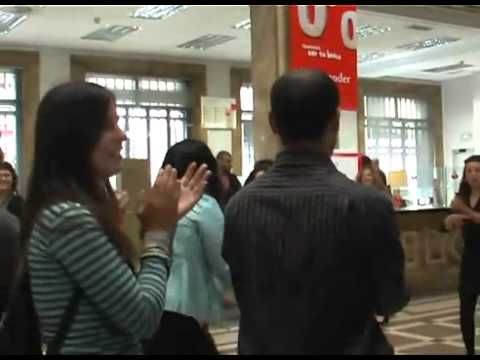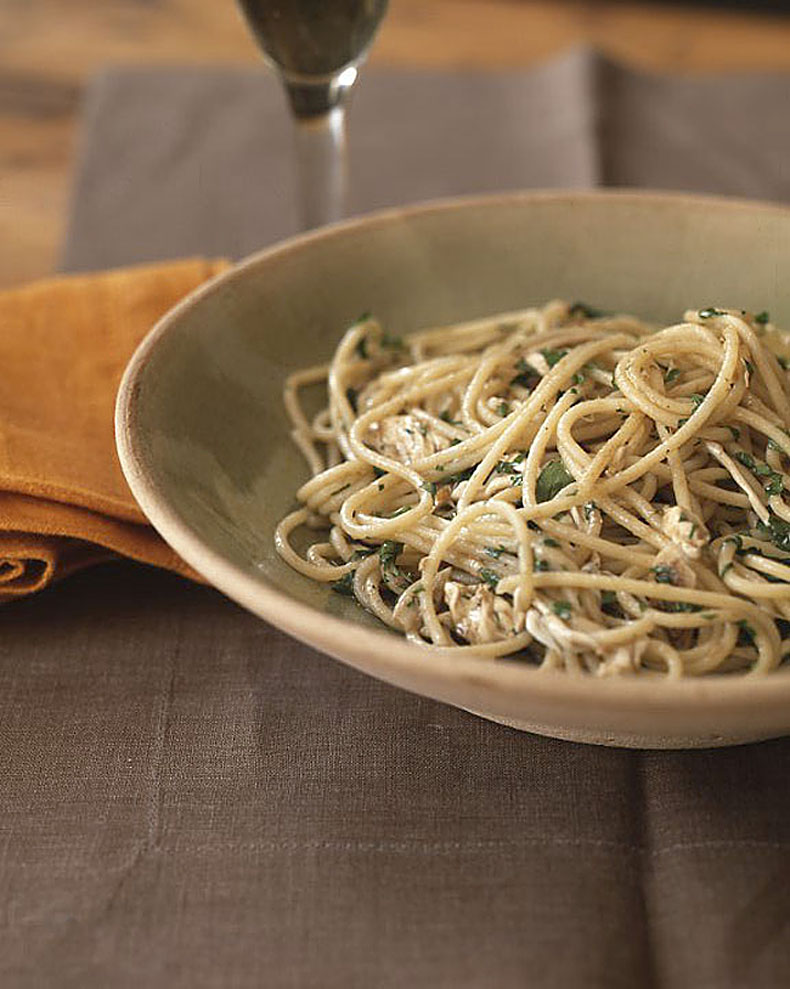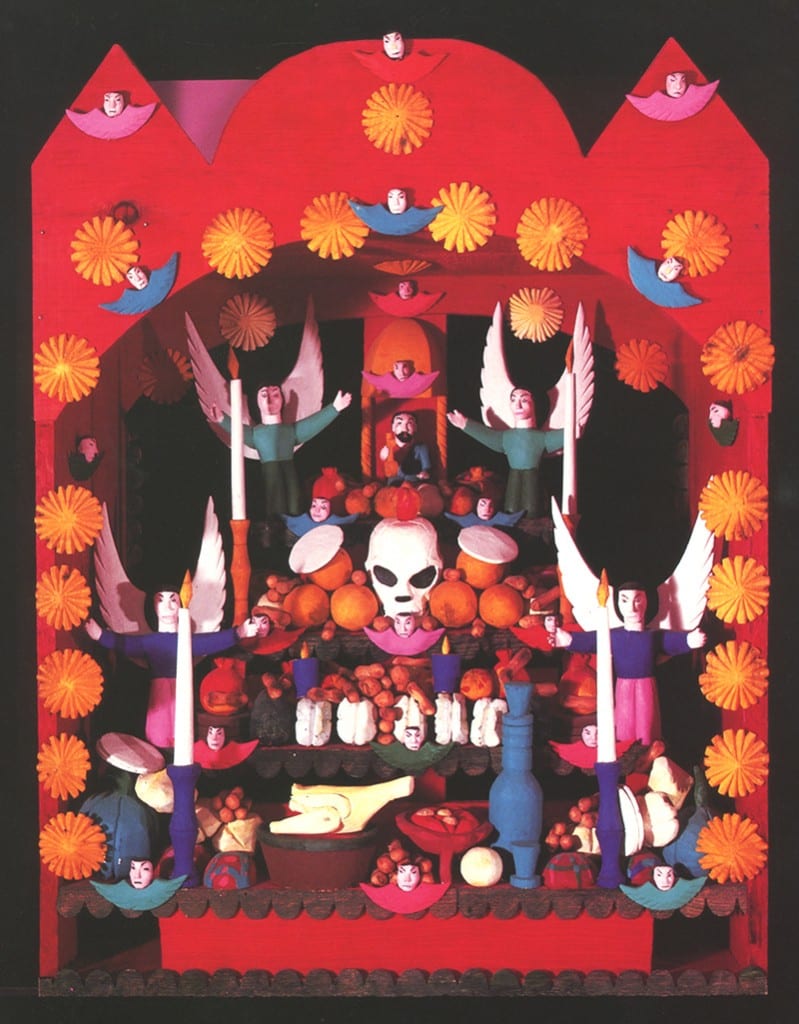
Altars to the dead should be festooned with marigolds and small objects that reflect the personality of the one being remembered. In addition to food, fruit and flowers, photographs, jewelry and stuffed animals, cigars, bottles of beer and tequila are often prominently displayed. If you build an altar, be sure to place a glass of water nearby to refresh the spirits after their long journey. And don’t forget to add some salt… the spice of life.

Mexican culture has a long history of being comfortable with death and embracing the circle of life. Mirthful skeletons make merry during Día de los Muertos reminding us of the inevitability of death with mordant humor and satire, poking fun at those of us whose pretensions cause us to forget that soon we, too, will be dust with the rest.
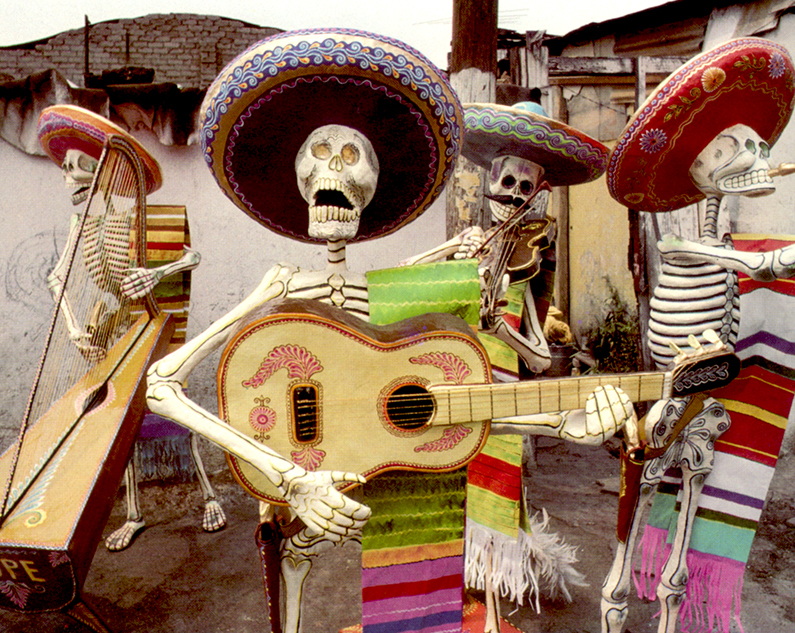
Catrinas (fancy ladies) are favorite characters during the festivities. These statuesque skeletons sporting feathery chapeaux laser our temporal vanities, pulverizing them with their papier-mache wit.
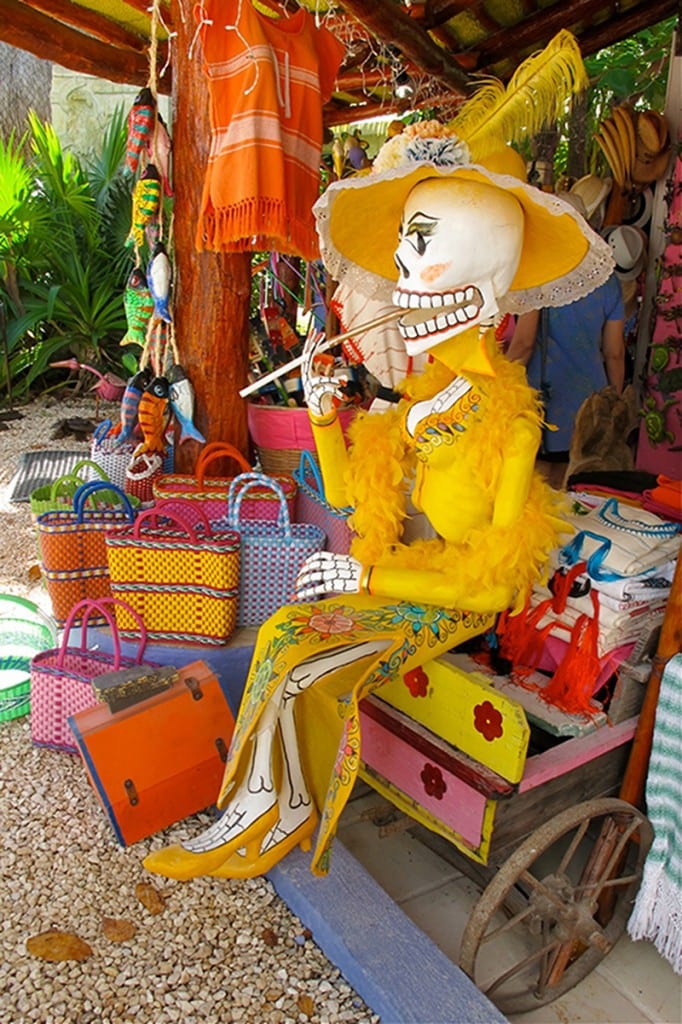
Death is on holiday during the Día de los Muertos celebrations, as asserted by these papier-mache skulls embellished with a jungle of plants, animals, birds and insects, complete with gaily painted, marigold eye sockets.
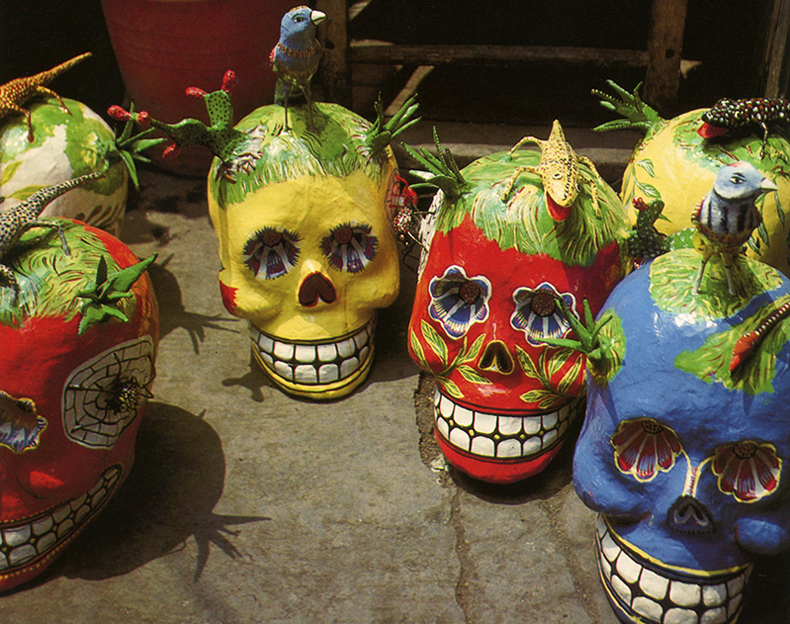
Food is a huge component of Día de los Muertos, particularly pastries and baked goods. Anise and orange-scented pan de muerto is favorite of mine– a baloony, Koons-ian loaf covered with bread ‘bones’.
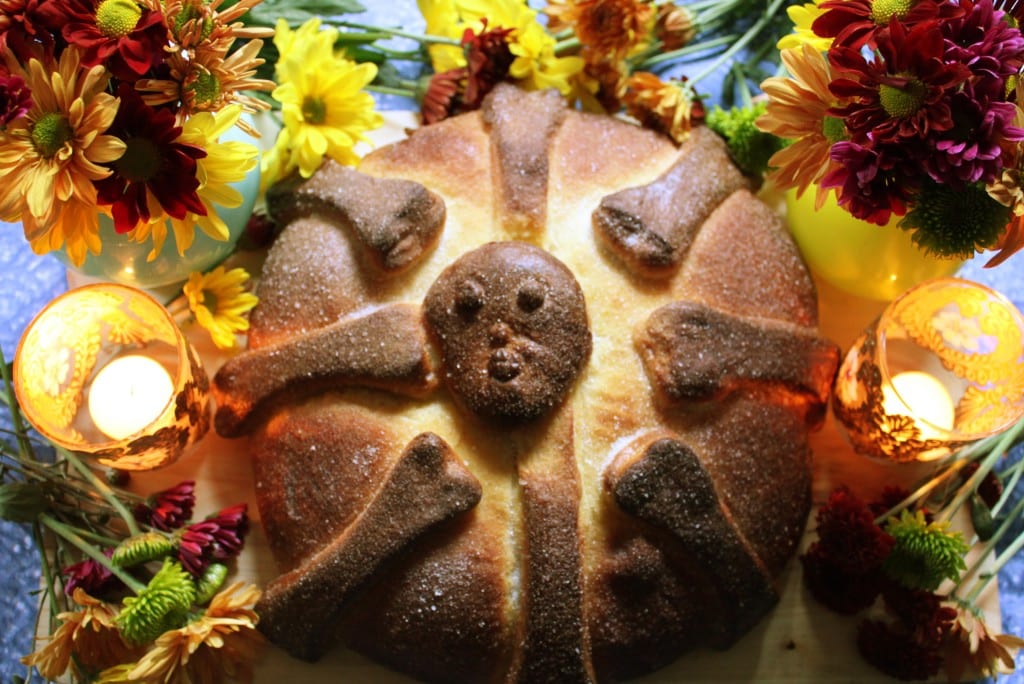
Cookies, called Calaveras, in the shape of skulls are the focus of day-long, skull-decorating parties enjoyed by both kids and grown-ups.
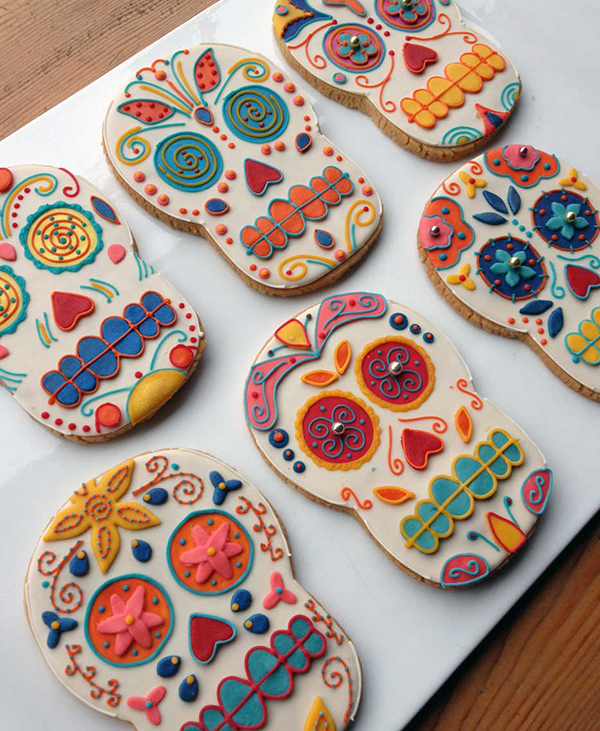
As fall turns inexorably toward winter, the Day of the Dead festivities serve to help us re-experience a powerful and sustaining truth: that the intense sorrow of death and the intense joy of living are indivisibly and forever, One.


